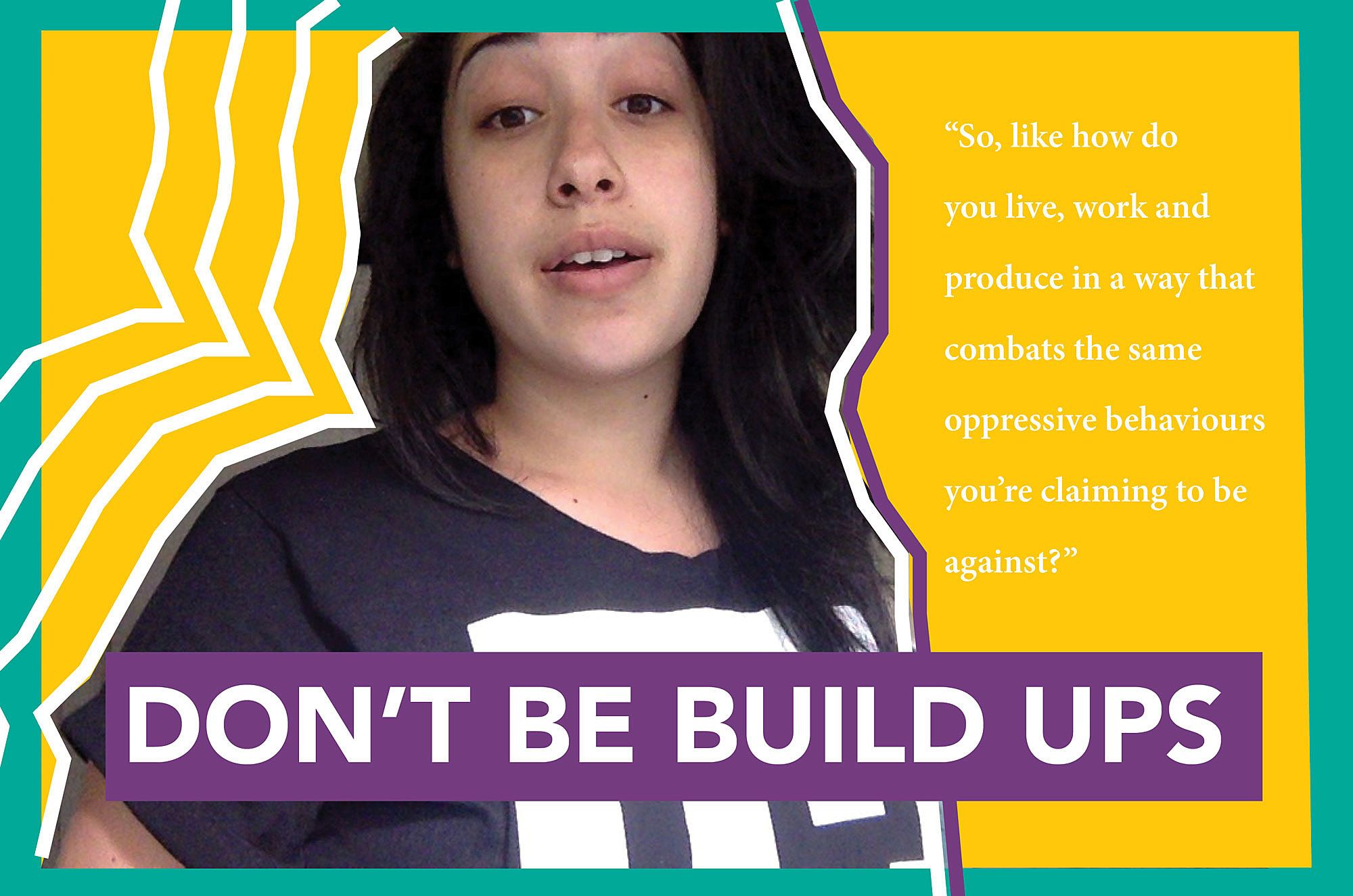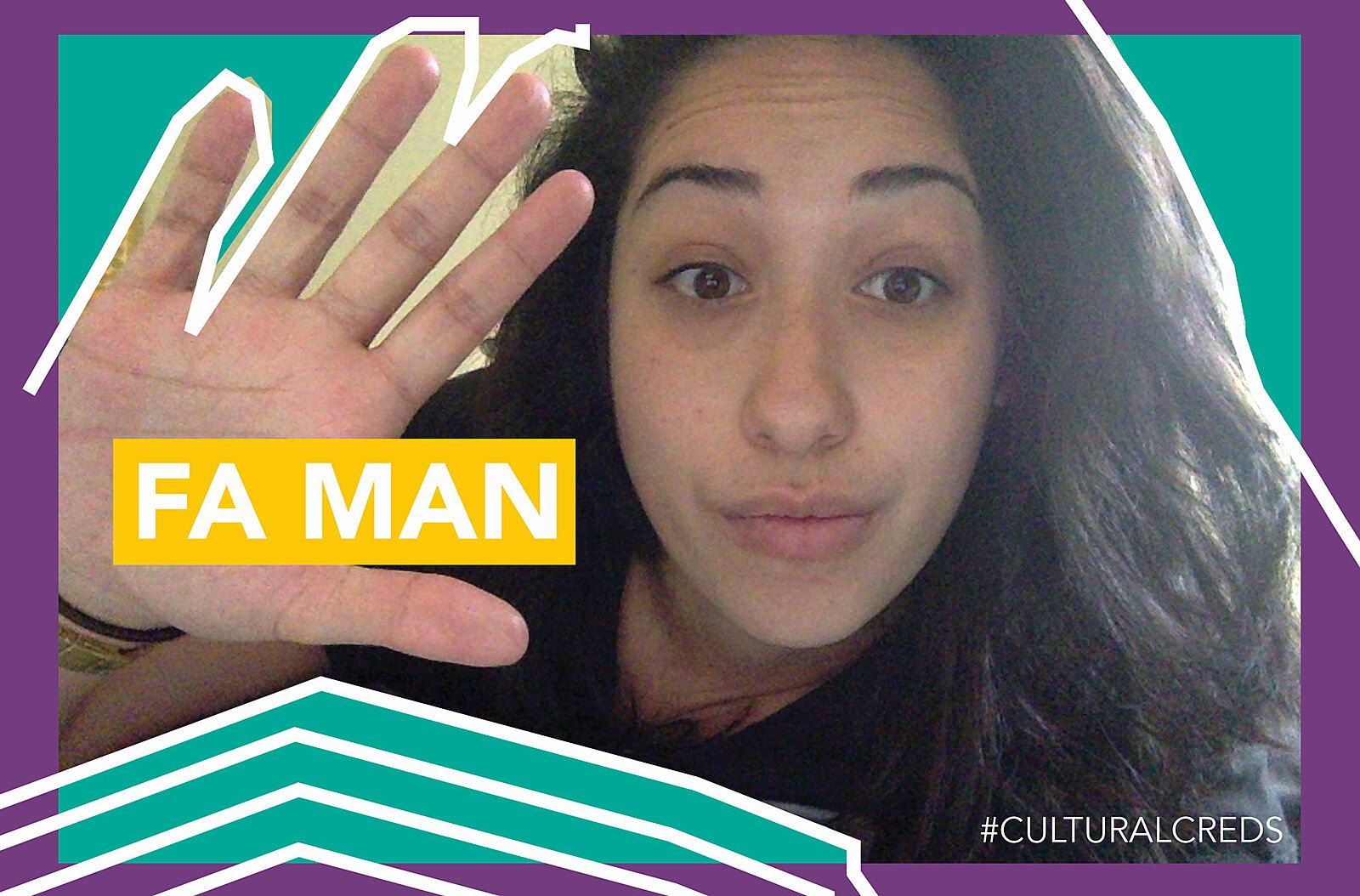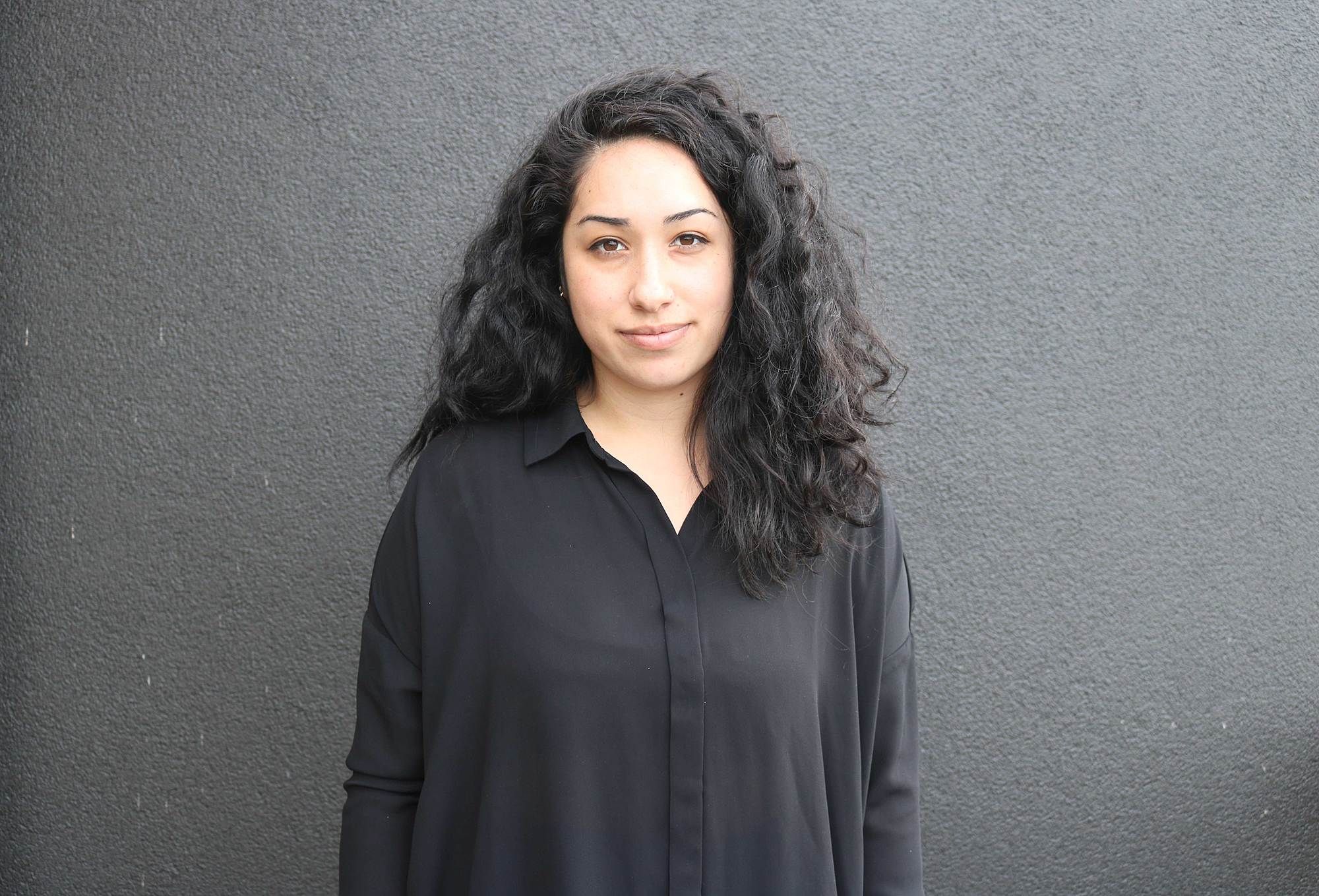Allyship, not ownership: on good curatorship, and being tauiwi
Lana Lopesi (tauiwi) thinks through If we never met… A wānanga on curating indigenous art and Te Ahiahi///Te Awatea Curating Contemporary Māori Art, two related/unrelated days of talking indigeneity in Pōneke.
Lana Lopesi (tauiwi) thinks through If we never met… A wānanga on curating indigenous art and Te Ahiahi///Te Awatea Curating Contemporary Māori Art, two related/unrelated days of talking indigeneity in Pōneke.
I’ve noticed I'm gaining a superficial comfort on marae. I’m starting to understand the protocols and the structures. I know that during the pōwhiri, we pause to give acknowledgment to those who have passed and to our ancestors and those of the hapū, and I know to make sure I have no food and drink in my bag or gum in my mouth. The super basics, but important basics.
It’s here that I have to do the Samoan thing and say I am Lana, the daughter of migrants and the daughter of labourers. My father’s parents migrated to New Zealand from the villages of Siumu and Satapuala in 1970 and my mother’s parents came from England and Canada. While ancestrally, I feel connected to Māori as an indigenous woman living in diaspora, I know that this is not my land, and at home I am tauiwi. For many migrants, like me and my family, connection to this land comes through a connection to the dominant “New Zealand” rather than to Aotearoa and Tangata Whenua.
Because of this, it has taken me until 24 to even start to dissect my role as tauiwi, and my role as an ally to Tangata Whenua. Ironically (and ashamedly), this hasn’t come from my own attempts to connect with people and places but an increasing mediation of marae experiences through a white framework – contemporary art institutions’ obsession with the wānanga and the marae as a site for symposia.
The newly popular institutional (Pākehā) idea of shifting symposia from lecture theatre to marae is a physical shifting of spaces, dominance, structures and furthermore world views. While the hirage of a venue and a rent-a-pōwhiri is hardly a comprehensive insight into Te Ao Māori, I’m a supporter. It works, Pākehā and tauiwi feel awkward in a whare nui that they shut up – albeit for a brief moment in time.
These institutional wānanga create a superficial sense of cultural inclusion, separated from our actual curatorial programmes and art spaces.
What I’ve always been anxious of is how this can actually affect our curatorial programming. Most of the people at these contemporary art wānanga (often including those running it) are invested and investing in a European academic tradition of art. Of course, many of us are also invested in other epistemologies, philosophies and cosmologies that affect curatorial practice - but at the end of the day, the art we engage in is overwhelmingly Western and the discourse around it is largely academic. We go to the marae, go through the motions of protocol, then go back to our white institutions and wonder why ideas are not translating, and why these spaces we work for are not safe. These institutional wānanga create a superficial sense of cultural inclusion, separated from our actual curatorial programmes and art spaces.
*
Last week, I attended If we never met… A wānanga on curating indigenous art, hosted by Pātaka Art + Museum at Takapūwāhia Marae in Porirua. While the wānanga was tied to an institution, it also sprang from an international First Nations curators’ tour supported by the national funding bodies in Australia, Canada and here in New Zealand. This initiative brings together indigenous curators from these countries over a three year period (2016 being the second year). It was a wānanga on indigenous curatorial practice held in an indigenous space, by indigenous curators (and Pātaka) and largely (I assumed) for indigenous curators.
The criteria for the wānanga sets itself in the title, If we never met. The pertinent question asked was what can happen when we bring together indigenous curators from around the world. Because of that proposition, the day was really about introductions and knowledge sharing. It’s important just to all be in the same room. So while the day’s conversation was not earth shattering, on that fundamental basis the wānanga was undeniably successful.
There was a lot of Pākehā comfort in a conversation about “curating indigenous art”- which isn’t to say that the Pākehā voice was loud at all, but that it was listening and observing.
It is impossible to reflect on If we never met… A wānanga on curating indigenous art, without also talking about the following day’s event, Te Ahiahi///Te Awatea Curating Contemporary Māori Art held at City Gallery. Te Ahiahi///Te Awatea was a precursor to a symposium of the same name coming up in June 2017. It is a joint project between City Gallery, Toi Māori Aotearoa, and Victoria University of Wellington. In contrast to the Porirua wānanga, we moved out of the marae and the suburbs and into the City Gallery auditorium. Instead of a pōwhiri, we had a walk around the Cindy Sherman exhibition. Importantly, Te Ahiahi///Te Awatea involves Māori but is not necessarily from Māori. The organising group is a diverse one, which includes Tina Barton, Robert Leonard, Aaron Lister and Anna-Marie White among others.
During a panel talk called ‘Methodology’, Leonard, a Pākehā and City Gallery’s Chief Curator, hit the nail on the head when he said “You can’t be a curator in this country without thinking about how Māori are curating and how Māori are being shown”. As a Pākehā curator, he felt a “contradictory proximity” to the idea of curating contemporary Māori art. He said he “felt weird”.
The day before, at Takapūwāhia Marae, I too felt a little weird. The large contingent of Pākehā and non-indigenous curators who had traveled to the wānanga was unexpected. There was a lot of Pākehā comfort in a conversation about “curating indigenous art”- which isn’t to say that the Pākehā voice was loud at all, but that it was listening and observing. Reflecting on Leonard’s comments and his expression of discomfort and uncertainty, I recognised that of course Pākehā should be present in these settings. It also occurred to me that when he describes his feeling of “contradictory proximity”, he’s talking about being an ally, and the challenges of being an effective one.
So with that lies a proposition: how can non-Māori curators and directors live, work and produce in a way that combats oppressive behaviours toward Māori as tauiwi allies.
When thinking about allies as it’s been conventionally used in the past, we think of how states, groups or individuals formally cooperate with one another for military, economic or strategic purposes - as a way of combining resources for mutual benefit. But the modern role of an ally and allyship, and its asymmetries of power, has been scrutinised and clearly defined through LGBTQI movements as well as those such as Black Lives Matter. To be someone who through an identity of privilege can live in a way that combats oppressive behaviours - for example the straight ally, or the white ally. In our context, in Aotearoa, we should really be thinking about how we can operate as tauiwi allies. Let’s say we push this further, and consider how curators can be allies and how curatorial practice can be seen as a form of allyship.
So with that lies a proposition: how can non-Māori curators and directors live, work and produce in a way that combats oppressive behaviours toward Māori as tauiwi allies. To put it another way, how can you curate in a way that doesn’t reinforce the same oppressive behaviours you’re claiming to be against?
It seems simple, right? Decide you’re an ally, check some diversity boxes. Not exactly. Being an ally is not a noun or identity, but an action. When your work is curatorial and therefore public, it’s very easy to see what you really care about. There are endless examples of self-defined allies whose unconscious decisions betray them (and those they are said to be allies of) revealing entrenched privileges. Christina Barton, Director of Adam Art Gallery Te Pātaka Toi chaired the ‘Methodology’ panel at Te Ahiahi///Te Awatea excellently, but I’m struggling to find a Māori artist – other than Ruth Buchanan (Te Āti Awa) who is currently on exhibition – who has exhibited at Adam Art Gallery within the last two years (please prove me wrong). A lot of great work has been done on how to be an ally which we can all benefit from, like here or here, or maybe even here.
Curator allyship isn’t just using your power as a curator to give an indigenous artist an exhibition (although that’s a good start) but also involves being able to articulate sophisticated and varied indigenous practice without reinforcing binaries.
It’s an interesting time for indigenous practice in New Zealand, with Shannon Te Ao (one of three Māori finalists) winning the 2016 Walters Prize two years after Fijian artist Luke Willis Thompson won. We are also going into the 2017 Venice Biennial, where both New Zealand and Australia have indigenous women representing their pavilions. As our awards and international exhibitions become more representative, curators and institutions have to learn how to be allies, and do it pretty damn quick.
Curator allyship isn’t just using your power as a curator to give an indigenous artist an exhibition (although that’s a good start) but also involves being able to articulate sophisticated and varied indigenous practice without reinforcing binaries. At Takapūwāhia Marae, the Samoan curator of Te Uru Contemporary Waitakere Gallery, Ioana Gordon-Smith, said her approach to “dealing and working with indigenous artists has come from dealing and working with indigenous artists.” There’s something important in that seemingly simple phrase. Every artist wants to deal with their indigeneity in their own ways. As tauiwi allies we have to reflect on the individual’s approach.
I always think about how performance artist Kalisolaite ‘Uhila's 2014 Walters Prize nominated work was written about in both mainstream and arts media. People took his act of being homeless, sustained over several weeks in Auckland’s CBD, to be a direct reflection of a Pacific male lived experience. He told me later that year that his work was about something else entirely.
In ‘Uhila, Thompson and Te Ao (as well as Janet Lilo and Jeremy Leatinu’u among others), we have artists whose work is not separated from their indigenous identities, but is also about so much more. They are artists who work and respond to technology shifts, the internet, transmission of information, languages of film and performance. The list can go on, yet writing and framing around these practices still seems hampered by an inability to articulate the complexities of what they are doing.
What this comes down to is something Auckland Art Gallery Toi o Tāmaki Curator, Māori Art, Nigel Borell raised during Te Ahiahi///Te Awatea as “the voice”. He raised an anxiety about whose voices take priority and how understanding that determines how he places himself within the situation. Curator Anna-Marie White responded by talking about “collective responsibility”. They were actually agreeing, and were perhaps acknowledging the nature of allyship too.
The thing about the arts, is that all it takes is for you, the curator, to decide you are going to do some cool shit and then do it, with thought and care.
As a tauiwi ally it is important to use your privilege to enable access to spaces and resources, so long as Pākehā voices are not centered and elevated. As Gordon-Smith affirmed, the mainstream can provide time, money and space. Anybody can write or curate about anything if they do it right, understand their position and privilege and give way to voices that are more important. An ally’s role is never to speak for others, but to take down the obstacles facing the oppressed to allow them to speak for themselves.
I left the last session of the two day wānanga-cum-workshop experience slightly depressed, inarticulate and with a thumping headache. While there were elements of promise at both day’s events, it is obvious that there are still many problems and many tensions and few answers. It became apparent just how much work is still yet to be done. Our gallery spaces currently aren’t safe because as tauiwi allies we aren’t doing enough. My biggest anxiety, still, is that curators will fail to take the challenges laid back to their home institutions. But, if there is anything world politics has taught me this year, it is that imagining and aspiring is vital in the face of entrenched and insurmountable power. The thing about the arts, is that all it takes is for you, the curator, to decide you are going to do some cool shit and then do it, with thought and care. But, as we all know, only time will tell.



